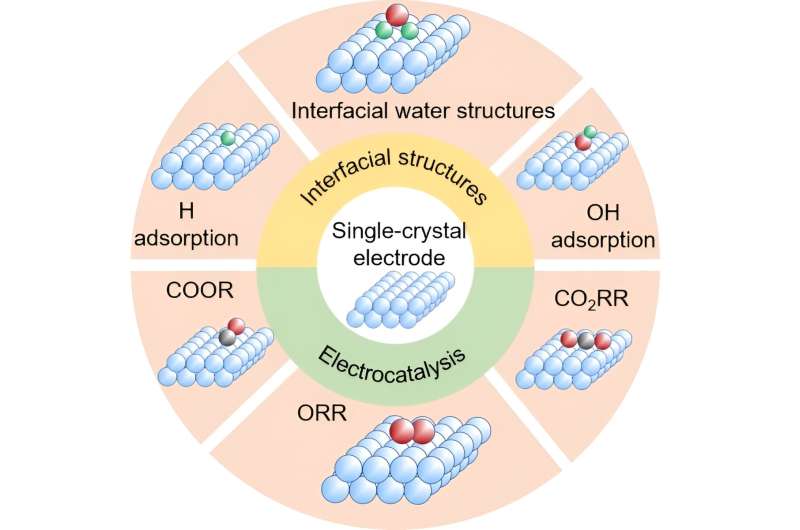This article has been reviewed according to Science X's editorial process and policies. Editors have highlighted the following attributes while ensuring the content's credibility:
fact-checked
trusted source
proofread
Recent advances in Raman spectroelectrochemistry on single-crystal surfaces

Benefiting from a principally contaminant-free and well-defined surface, single-crystal electrodes proffer new insights into interfacial processes and are important in electrochemistry. The surface atom density can be utilized to quantitatively explain the reaction process as a function of adsorbate coverage and catalytic reaction rate.
The early impetus for using single-crystal electrodes in electrocatalysis was to investigate the surface structure. These investigative works were usually performed in ultra-high vacuum to avoid contamination. Although undeniably valuable, the scope of these characterization techniques remains limited in terms of conclusive identification of chemical species, especially for in situ characterization of electrocatalytic reactions in solution.
The combination of in situ spectroscopy and electrochemical techniques to study the electrochemical reactions at single-crystal electrodes is of great importance to reveal the mechanism of electrocatalytic reactions by effectively capturing the intermediate species and obtaining the structure–activity relationship. However, limited by the signal intensity of normal Raman spectroscopy, it is difficult to obtain high-quality spectra on single-crystal surfaces.
Recent advances in shell-isolated nanoparticle-enhanced Raman spectroscopy (SHINERS) have enabled the detection of reaction intermediates on single crystal electrodes, in which shell-isolated nanoparticles on the single crystal electrode can enhances the Raman signal from surface, without changing the surface structure and electrochemical response.
Jian-Feng Li's group reviewed the recent advances in electrochemical studies of Raman spectroscopy on single-crystal electrode surfaces, focusing on how the SHINERS technique can achieve effective detection of intermediate species and provide valuable insights into the dynamic evolution of surface structures and electrocatalytic reaction mechanisms.
Their work is published in the journal Science China Chemistry.
More information: Quan-Feng He et al, Recent advances in Raman spectroelectrochemistry on single-crystal surfaces, Science China Chemistry (2023). DOI: 10.1007/s11426-023-1682-x
Provided by Science China Press





















